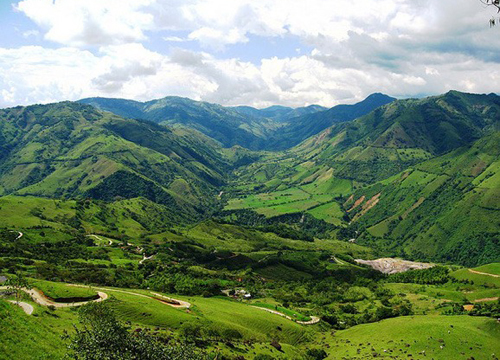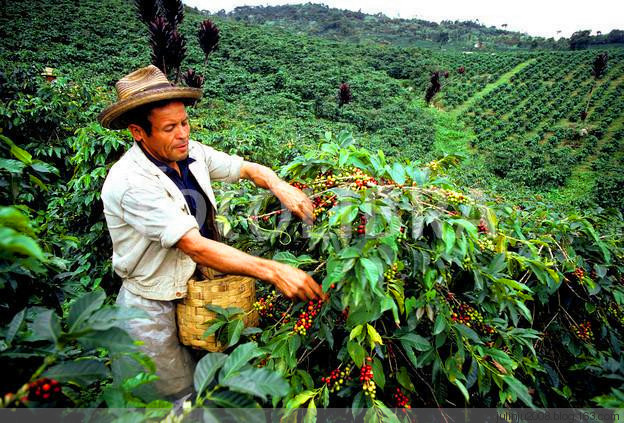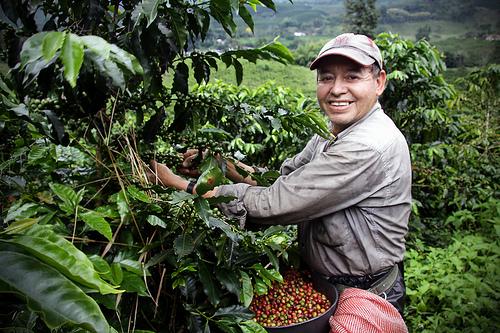Is Aceh Aceh in Sumatra, Indonesia, a Robbota species or an Arabica species? Coffee beans
Coffee has more than a hundred varieties of coffee, the more common coffee are: Arabica Arabica, outstanding personality, unique flavor, is the main force of boutique coffee, mainly used for coffee shop management and high-end coffee market supply; Robusta Robusta, rough flavor, high caffeine content, not boutique coffee, often used for instant coffee processing and Italian coffee mixed beans.
Ethiopian Typica and Yemeni Bourbon are the oldest coffee varieties known so far. Many Arabica variants have been derived after they were transplanted from the country of origin to Central and South America and Asia. The small seed coffee cultivated in Yunnan, China is one of the Typica variants, and there are Bourbon variants in other regions.
Country: Indonesia
Grade: G1BI 19 items +
Producing area: Gayo Mountain area of Aceh Province
Altitude: 1100-1300 m
Treatment method: traditional wet planing method
Variety: Katimo, Kaddura, Tibika, Sidikalong
Producer: local small farmers in the Gayo Mountains
Flavor: round and pure taste, mellow thickness, spices, herbs
Indonesian coffee is very diverse in quality, most of which are based on the island origin as its market name: such as Sumatra, Sulawesi, Jawa or Timur. The advantage of Indonesian coffee is that most coffee is characterized by strong, introverted flavor and lively moderate acidity. Chinese people think highly of Indonesian Mandheling coffee, and it is one of the coffee products with the highest acceptance of single coffee.
Indonesia Mandheling was once praised as the best unique wet peeling coffee bean in the world. Mantenin is a trademark merchandise. Nowadays, as long as the red cherry fruit of coffee harvested in Indonesia is processed by this unique wet peeling method, it will be sold as Mantenin coffee beans. Mandailing grew coffee from the Tapanuli region of northwestern Sumatra, because at the end of World War II, a Japanese soldier introduced the Japanese market and changed the wrong Mandailing into Mandheling coffee because of mispronunciation.
Sumatra (Sumatra):
Coffee in Sumatra is very complex and elusive. Although Sumatra is large, coffee is not grown all over the island. Coffee trees are grown in only the two northernmost provinces of the island's eight provinces, Aceh and Jiangsu: Aceh coffee is mainly produced in the GayoMountain mountains around Lake LakeTawar, and most of the farmers in this area are local GayoPeople aborigines. On the other hand, coffee in Jiangsu Province is mainly produced in the world's largest super crater lake-LakeToba Lake (Tuba Lake) and south Lindong (Lintong) producing area, and the local farmers are mostly composed of BatakPeople aborigines. Due to many sharecropper producers and the use of their unique semi-washing treatment and lack of iron in the soil, coffee beans in this area have a special blue color at the stage of fresh beans.
The Gayo region is located in Aceh and Gayo, north of Sumatra. Coffee is grown on the slopes around the town of Takegon and Lake Tawar. The average planting height in the production area is between 1110 and 1300 meters. Coffee is planted by shade farmers under shade trees, showing a peculiar flavor, low depth and lively and full-bodied flavor. Aceh, the northernmost corner of Sumatra, is a fascinating and complex place. Aceh is not an area visited by ordinary people because of its long-term political instability. Gayo people are hardworking and have a firm personality, and nearly 20% of coffee processors are women. Under this semi-wet and semi-dry peeling and wet washing method, the coffee farm machine removes the peel and pulp of the red cherry fruit. There is still a lot of mucus on the coffee beans, and then stored in a fermentation tank for about a day (24 hours). The attached mucus is easily washed away with water. Then when the sun-drying reaches about 30% to 35% water content, the coffee bean shell is removed and it can be sold on the market. When the shell of the coffee bean is removed in this semi-wet and semi-dry state, the bean itself reveals a unique dark blue, which reduces the acidity and increases the alcohol thickness (body) of the coffee, making this unique Indonesian coffee.

Important Notice :
前街咖啡 FrontStreet Coffee has moved to new addredd:
FrontStreet Coffee Address: 315,Donghua East Road,GuangZhou
Tel:020 38364473
- Prev

Iron pickup or bourbon? Iron pickup coffee bean iron pickup coffee price Bali, Indonesia
Iron pickup "Typica" iron pickup, the name sounds majestic and powerful, but in fact it is not so strong. It has a weak physique, poor disease resistance, easy to catch rust leaf disease, and produces less fruit. It is one of the oldest native varieties in Ethiopia, and many Arabica are derived from iron pickups! The parietal leaf of the iron pickup is bronzed, and the bean grain is large, pointed, oval or thin.
- Next

Iron pickup or bourbon? Iron pickup coffee bean iron pickup coffee bean price Indonesia Sumatra Island Asia
Iron pickup "Typica" iron pickup, the name sounds majestic and powerful, but in fact it is not so strong. It has a weak physique, poor disease resistance, easy to catch rust leaf disease, and produces less fruit. It is one of the oldest native varieties in Ethiopia, and many Arabica are derived from iron pickups! The parietal leaf of the iron pickup is bronzed, and the bean grain is large, pointed, oval or thin.
Related
- Guji coffee producing area of Guji, Ethiopia: Humbela, Shakiso, Wulaga
- What is the most expensive variety of Qiloso in BOP multi-variety group?
- How to store the coffee beans bought home?
- Why are Yemeni coffee beans so rare now?
- Ethiopian Sidamo all Red Fruit Sun Sun Santa Vini Coffee beans
- SOE is mostly sour? What does it mean? Is it a single bean? what's the difference between it and Italian blending?
- Is Italian coffee beans suitable for making hand-brewed coffee?
- How to choose coffee beans when making cold coffee? What kind of coffee beans are suitable for making cold coffee?
- Just entered the pit to make coffee, what kind of coffee beans should be chosen?
- Can only Japan buy real Blue Mountain Coffee? What are authentic Jamaican Blue Mountain coffee beans?

